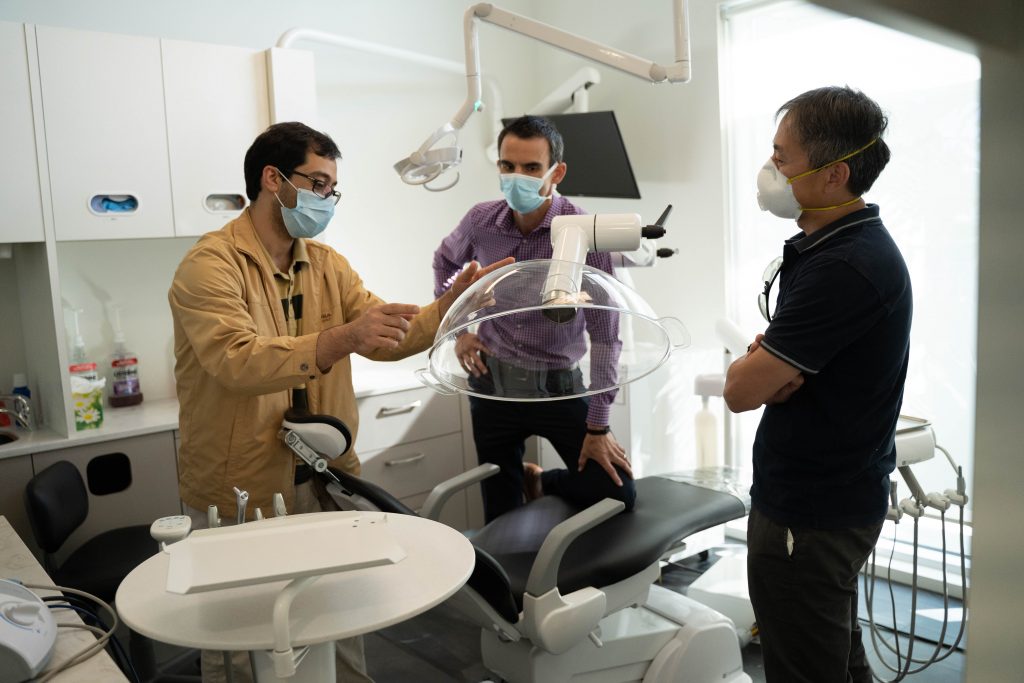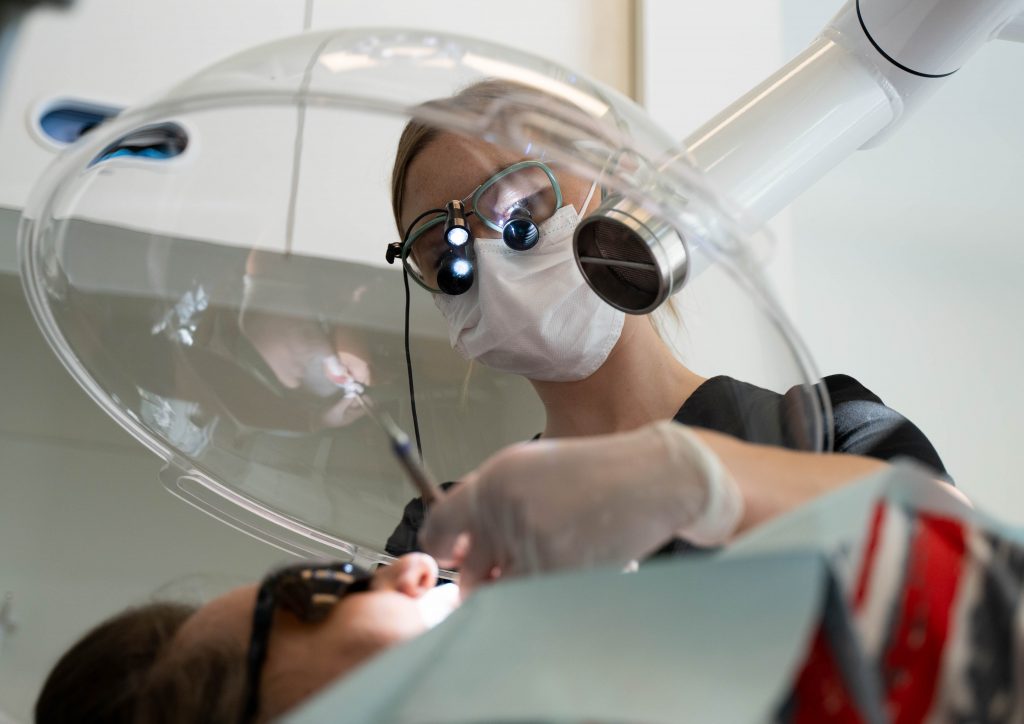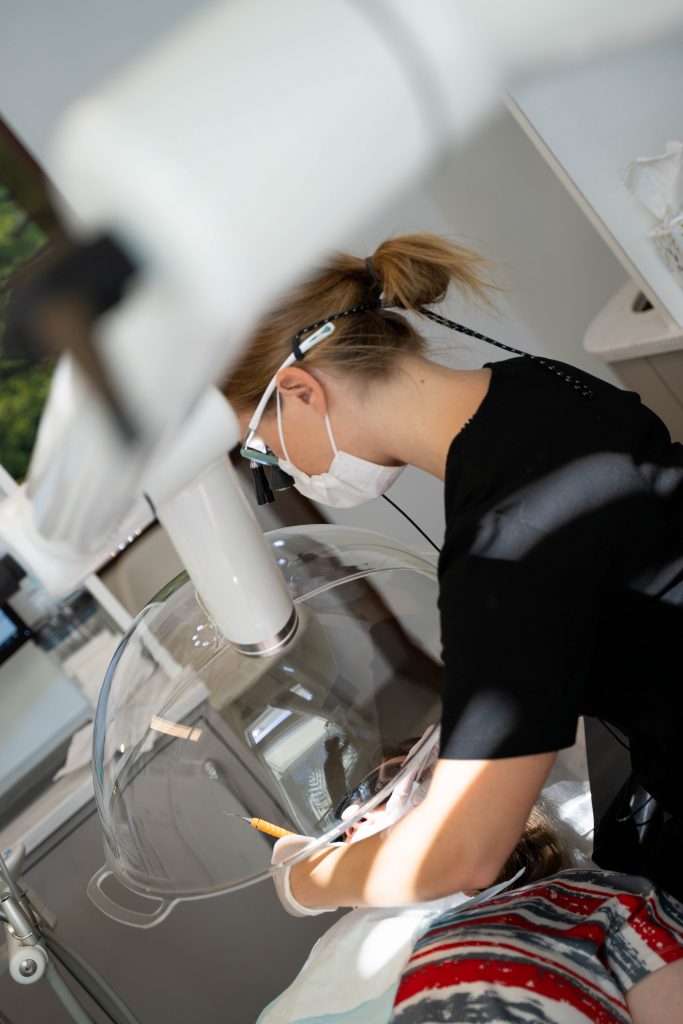
UBC Okanagan researchers working collaboratively with a Kelowna-based Research and Development firm, Care Health Meditech are bringing to market an innovative synchronous, local collection device (AIIR) for the dental industry. The device is designed to add an additional layer of airborne infection control, making a visit to the dentist, either as a worker or patient, more safe.
Many dental procedures are aerosol generating procedures (AGP), meaning they result in small uncontrolled droplets and release them into the air as dental toola extract blood and or saliva in the patient’s mouth. These droplets can contain dangerous pathogens, like COVID19, which if not controlled or eliminated can migrate into other areas of the facility and potentially remain suspended in the air for up to two-hours. This creates an infection risk and places the dental workers and the community at risk.
Dentists currently employ prescribed controls to contain and eliminate these potentially dangerous uncontrolled aerosols. These controls include performing dental procedures in a closed room, and leaving the room empty for a certain amount of time (fallow times) after the procedure is complete to allow any uncontrolled aerosols to settle out of the ambient air.

AIIR unit in use at Care Dental in Kelowna
These strategies present some challenge as the dental industry has embraced open-concept design making it less practical to close the room. Also, the fallow times themselves do nothing to protect the clinicians from potential exposure.
Royal Colleges of Dental Surgeons across Canada are recommending fallow time benchmark of between 15 to 30-minutes, meaning dental clinics need to ensure a prescribed buffer time between patients.
In their latest report, Associate Professor Sunny Li along with a number of other UBC faculty from the School of Engineering and the School of Health and Exercise Sciences, determined that “local and synchronous engineering controls (such as AIIR devices) are faster, and particularly leave little to no clinician contamination.”
“As a result of the effectiveness of these devices, their usage could be used in place of fallow times.”
“We measured how droplets spread around confined areas like dental rooms, and the droplet’s response or reaction to the suction devices,” explains Li, “and there was a clear difference in the intensity, frequency and time to clear between facilities that had the devices and those that didn’t.”

AIIR system in use at Care Dental in Kelowna.
The researchers are looking at expanding the usage of similar suction devices particular in acute, and ambulatory healthcare.
According to Li, the applications could extend beyond healthcare settings as well. “We want to ensure the benefits to patients and healthcare practitioners first, before we turn our attention to studying the possibilities of such devices within other indoor spaces such as restaurants, elevators, and gyms.”

The research is currently published as a white paper, and available at http://soe-tmmf-2020.sites.olt.ubc.ca/files/2020/10/Local-and-Synchronous-Control-of-Covid-19-Airborne-Transmission.pdf